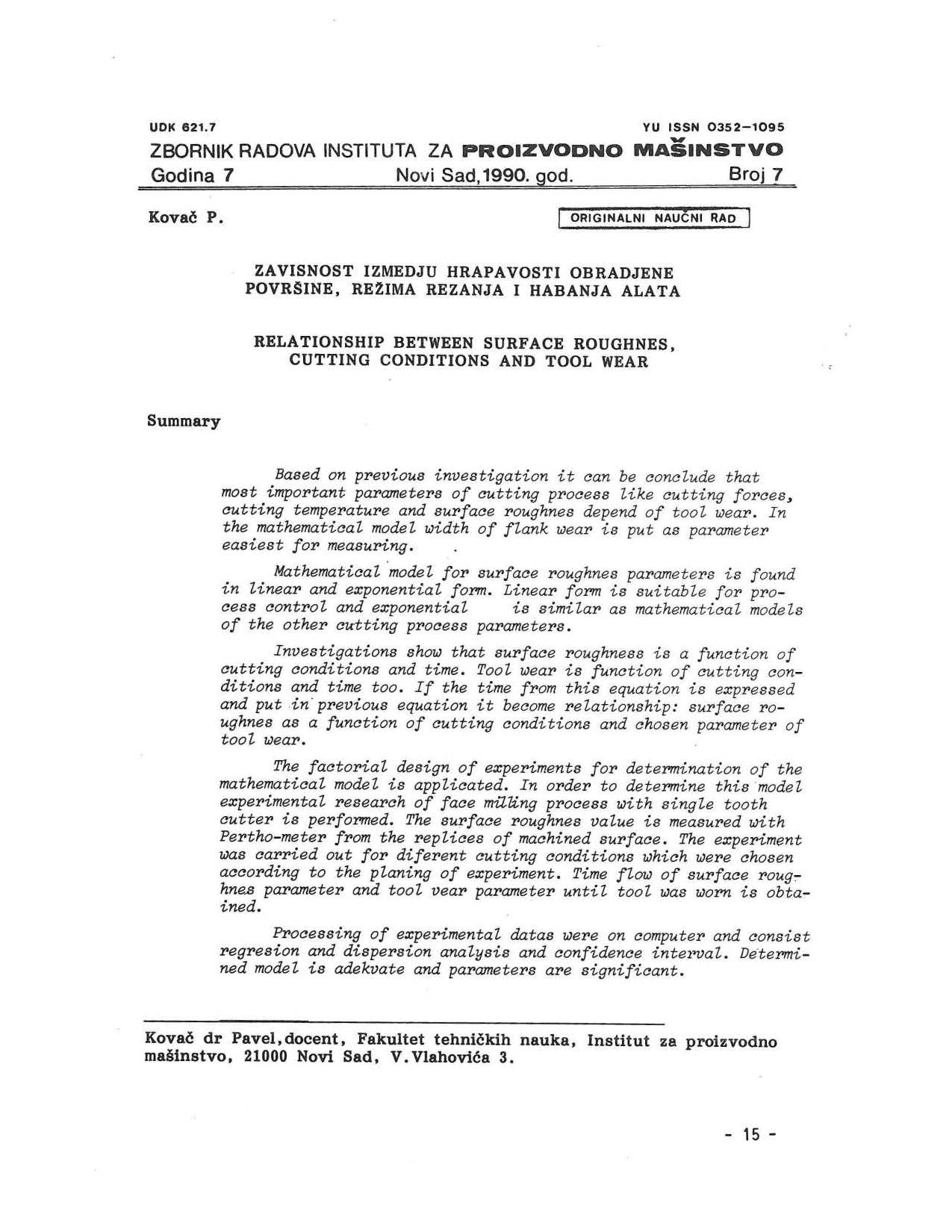
Published 1990-12-01
abstract views: 218 // FULL TEXT ARTICLE (PDF): 120
Keywords
- cutting forces,
- cutting temperature,
- surface roughnes,
- tool wear
How to Cite
Copyright (c) 2023 Journal of Production Engineering

This work is licensed under a Creative Commons Attribution 4.0 International License.
Abstract
Based on previous investigations, it can be concluded that the most critical parameters in the cutting process, such as cutting forces, cutting temperature, and surface roughness, depend on tool wear. In the mathematical model, the width of flank wear is considered the most straightforward parameter to measure. Mathematical models for surface roughness parameters are found in linear and exponential forms. The linear form is suitable for process control, and the exponential form is similar to mathematical models used for other cutting process parameters. Research indicates that surface roughness is influenced by cutting conditions and time. Tool wear is also a function of cutting conditions and time. If we express time from this equation and incorporate it into the previous equation, it establishes a relationship: surface roughness as a function of cutting conditions and the selected parameter of tool wear.
Factorial design of experiments is applied to determine the mathematical model. To establish this model, experimental research on face milling processes with a single-tooth cutter was performed. Surface roughness values were measured using a profilometer on the machined surfaces. The experiment encompassed different cutting conditions selected according to the experimental design plan. The time-dependent relationship between surface roughness and tool wear until tool wear occurred was obtained. Processing of experimental data was carried out using computer-assisted regression and dispersion analysis, along with the determination of confidence intervals. The established model is adequate, and the parameters are deemed significant.

